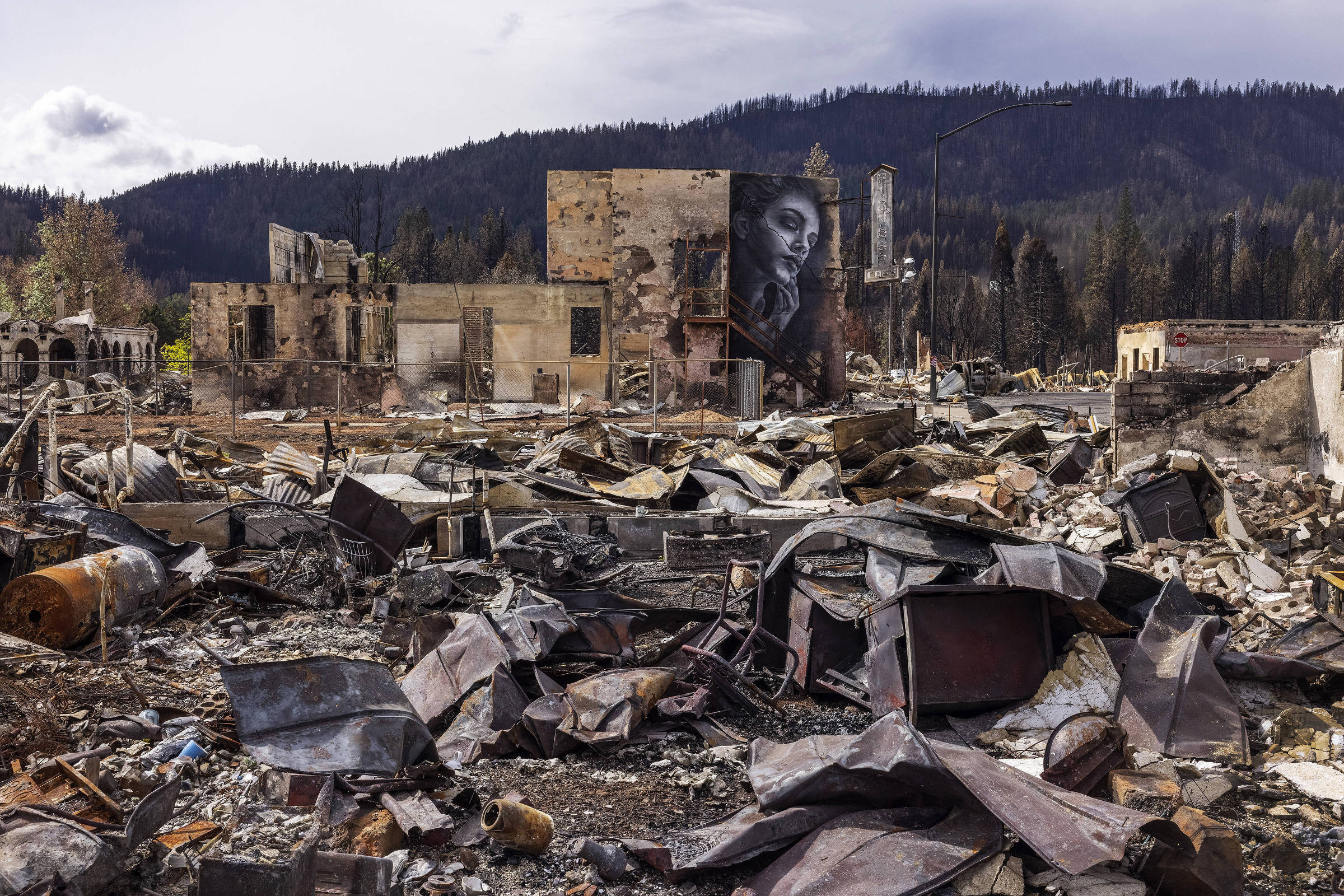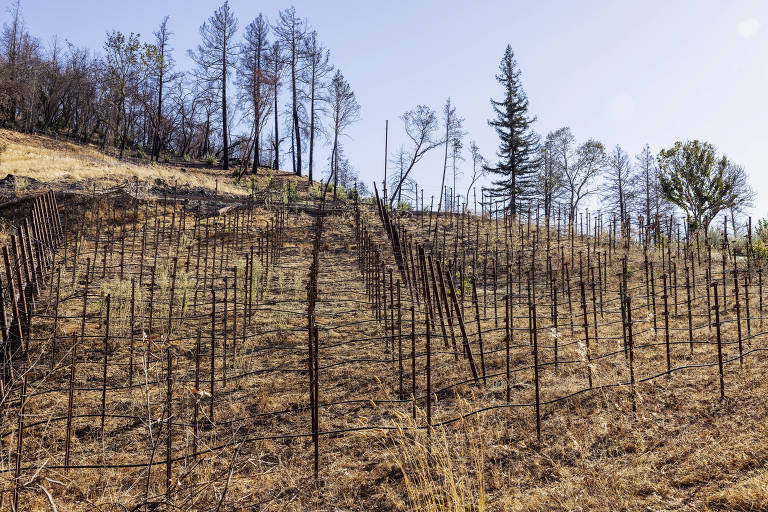The fire engulfed Greenville in less than an hour. On the night of August 4, a wall of flames descended the mountains and devastated 75% of the small town in Northern California.
The tall trees that surround the 150-year-old city, together with the strong wind and dry vegetation, fueled the flames. City hall, the church, houses and businesses turned to ashes, while the last of the nearly one thousand residents escaped far away.
No one died, but two months later, when we arrived in town, you could still smell the smoke left by Dixie, the second-largest wildfire in California history. The scene was bleak: carcasses, pieces of furniture and melted cars amid thick layers of dust that covered unrecognizable structures.
One of them had been the home of former gold prospector Tami Spang for 17 years. She lost two cats, a car and everything she owned to the fire. In a plastic bucket, she gathered what she could salvage from the rubble. So far, pieces of a nativity scene and a bracelet.
"Some people say it's not worth looking for, that it's just burned junk, but it's my burned junk," says Tami. "Greenville was known as the gold mining region. Now we will be the city destroyed by Dixie. The fire took our story."

Ruins in the city of Greenville caused by Dixie, the second biggest wildfire in California history Lalo de Almeida/Folhapress
Wildfires are common in California, but the climate crisis has increased fire's destructive potential, as extreme heat waves and drought create conditions for the flames to spread faster and become harder to fight.
The intervals between catastrophes are also shorter. Of the 20 biggest fires in California, nine occurred between 2020 and 2021, a sign that the process of rebuilding cities and decimated forests is close to unsustainable.
In 2018, 120 kilometers from Greenville, the Camp forest fire left 86 people dead and destroyed the town of Paradise, which has still not been able to fully recover.
According to the California Fire and Forestry Department, from 1987 to 2019 the amount of land burned in the state had never exceeded 8,000 km² per year. In 2020, however, that number jumped to 16,000 km². By October 2021, there were already 11,000 km² burned, 3,800 due to Dixie alone. The fire that destroyed Greenville was second only to the 2020 August fire named Complex, the largest in the region's history, burning more than 4,000 km².
Dixie started in Northern California on July 14 after a tree fell on a transmission line for Pacific Gas and Electric, the state's largest energy company. The fire then quickly spread through the Plumes National Forest.
According to a story by The New York Times, the fire took nearly three months, 6,500 people, millions of liters of water and US$ 610 million (R$ 3.35 billion) to be brought under control —by far the largest fire in the state.
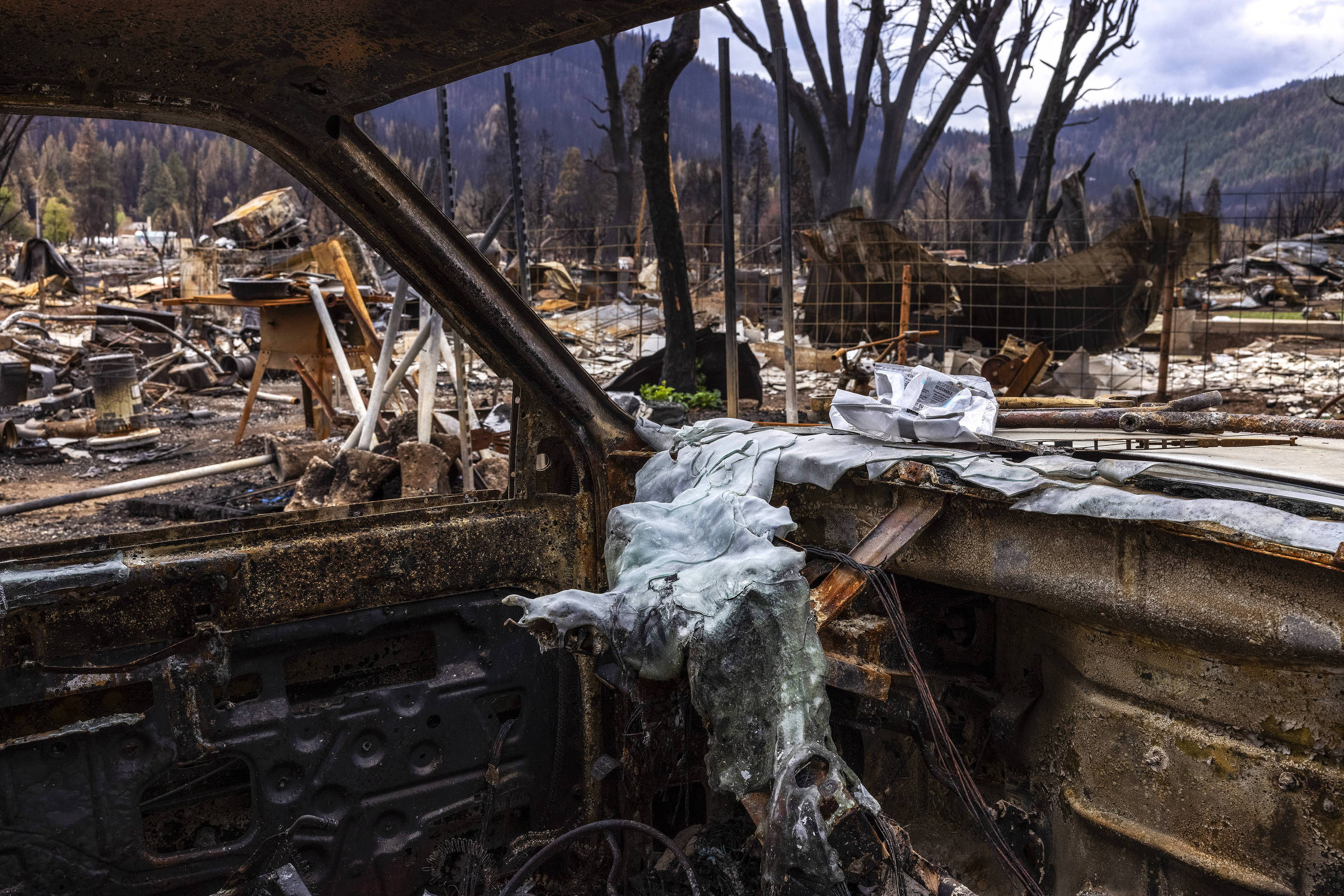
Molten glass inside a car burned in Greenville, Northern California Lalo de Almeida/Folhapress
As Dixie burned huge swaths of land, other smaller wildfires raged across California, displacing populations and relief workers. In the week we spent there, we learned a mantra repeated by the residents as a sense of survival: "when you see the glare, run."
By early October, few had returned to check on the damage in Greenville. Richard Hamblin was one of them, and he was bereft. The house built a few decades ago by his grandfather was empty on the day of the fire and it turned to dust.
With the help of volunteers, Richard was trying to find a ring that his father, now 92, got when he graduated from high school in the late 1940s.
"My dad was a firefighter for 70 years," he says, to illustrate that dealing with fires was routine in his home. So, when asked how he's going to prepare for the next one, Richard is pragmatic. "There's nothing left to burn here, but I won't rebuild."
Greenville has been hit by other fires over the years, but devastation of this proportion is only comparable to the fire of 1881, when 500 people lived in the city. Back then, the rebuild took less than a year, but this time there are still no plans of rebuilding.
"It's impossible to estimate deadlines," says Colin Dillon of McLarens, an insurance company that covers Greenville's public buildings. "Seventy-five percent of the city was destroyed, and it must cost hundreds of millions of dollars to rebuild the entire infrastructure."
Colin was in town in early October to assess the damage and calculate the costs for rebuilding the city hall, library, police station and fire department, in a job he says he has repeated over and over again for 15 years.
For decades, the government has invested in fighting wildfires, which has given many in California the confidence to live in forested areas. The problem is that, while protecting communities, this policy has allowed dry vegetation to accumulate, a factor that helps the flames spread farther and farther.
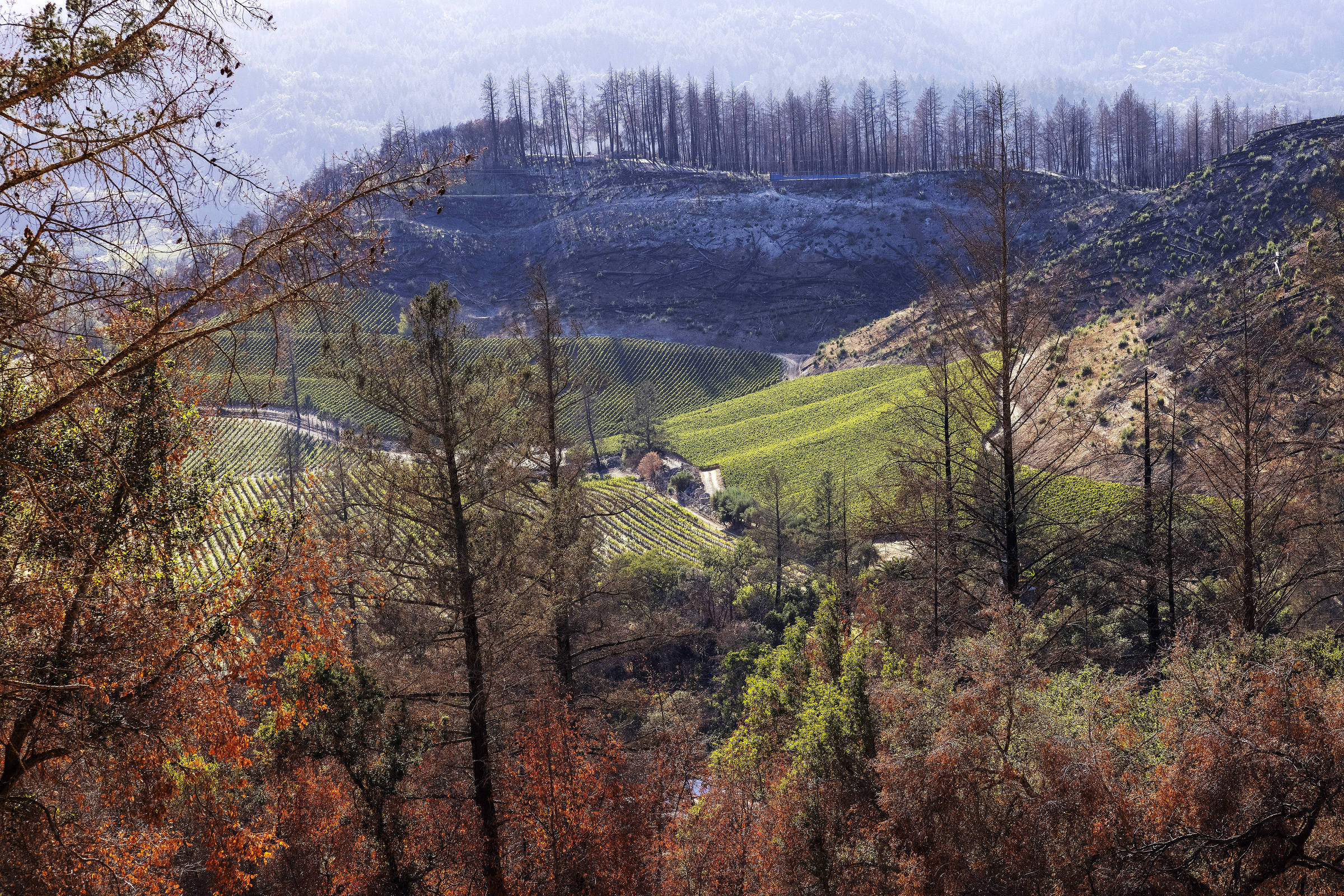
Vineyards amid a burnt forest in California's Napa Valley Region Lalo de Almeida/Folhapress
South of Greenville and near San Francisco Bay, for example, Napa Valley wineries - the heart of US wine production - see fires becoming a serious crisis. Tourists still flock to the gourmet market and restaurants in downtown Napa, but high up in the mountains we found farms surrounded by burnt trees, with little access to water, and the expectation that the outlook will only get worse.
Stuart Smith met us on October 10 at the Smith-Madrone winery, which he bought in 1971. Driving a golf cart, he showed us the green, well-aligned grape groves that used to produce 4,000 to 5,000 cases of wine a year.
For more than three decades, the winery has not felt the impacts of the climate crisis. In 2008, however, the scenario changed. Smoke from wildfires that swept through other parts of California reached the Napa Valley and contaminated Stuart's grapes.
Before bottling some of the red wine, his brother Charlie tasted it and grimaced. "The taste changes, the smoke sucks the fruit, makes the wine vinegary and less interesting," says Stuart.
That year, they still managed to sell a few bottles —the smoke mainly harms the grapes for the reds, whose skin is used in production— but now the fire has come closer and closer. Last year's Glass fire burned trees on Stuart's property and reached within yards of the vineyard. The flames did not get to the grapes, but the proximity of the smoke left them unusable.
This year, Stuart managed to produce wine, but in smaller quantities. The blame, he says, is the drought, the biggest problem for his winery. "We are terrified of dry reservoirs, without substantial rain, not knowing what to do for next year," he says, noting that he is already resorting to measures to save water that will soon be insufficient.
Napa Valley growers sold $829 million (BRL 4.6 billion) of red wine grapes in 2019. In 2020, with the Glass fire, the value dropped to $384 million (BRL 2.1 billion).
"You wake up tired, work tired, sleep tired. We're depressed," says Stuart. When asked whether it is worth facing the climate crisis and poor forest management to produce wines, he replies: "Wait until the next harvest to drink a glass of our own wine. You have to be resilient."
Across the valley, Susan Boswell was not as lucky as Stuart, who saw the flames die down before reaching his vines. In September of last year, the Glass fire devastated the Château Boswell winery, built by her husband in 1979.
"I woke up at dawn, looked out the window and saw an orange ball coming. I grabbed my dogs, my bag, jumped in the car and accelerated," says Susan. "The fire hit my property squarely from three different directions. I didn't stand a chance."
She says she lost the house she used to live in, the building that housed the office and the winery's tasting room, as well as vines and the cellar, with hundreds of barrels and thousands of bottles of wine -all of the 2018, 2019, and 2020 production.
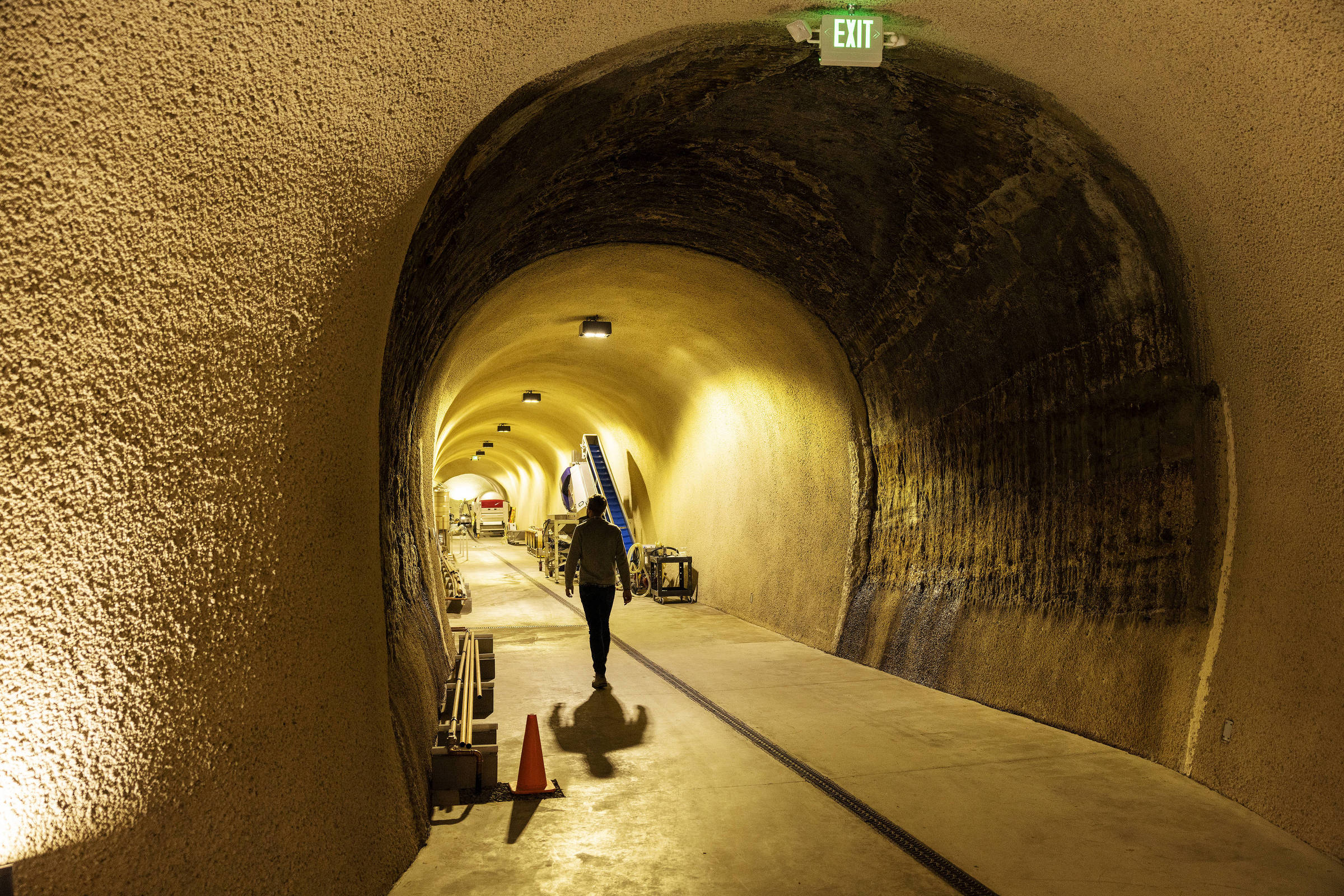
Château Boswell winery basement built after a forest fire in 2020 in the Napa Valley region Lalo de Almeida/Folhapress
When we arrived at Château Boswell, a little over a year after the fire, Susan still hadn't reopened the space, which is currently in the process of rebuilding. "I considered the financial and emotional cost of rebuilding and had a team that supported me. We want to show the public that we are the same as before."
Susan repaired the inside of the cave and will use stone, steel and glass for rebuilding other construction. She also bought giant sprinklers called Fire Bozz to surround the land, spreading water and increasing humidity in times of drought, and says she's taking steps to ensure that everything is done sustainably.
Before the damage, Château Boswell produced 3,000 cases of wine a year and was the first winery in the region to earn the green seal of the Napa Green Winery Program, which, since 2004, encourages producers to commit to environmental stewardship and climate action.
Like Stuart, Susan calls for better government management of forests and prefers not to take alternative measures to protect the grapes from the intense heat. Spraying sunscreen over plantations has become fashionable this summer, but some of the growers who have done so say the result is not satisfactory.
The portrait of calamity in the third-largest US state —and the sixth visited in this reporting series— completes the picture of an environmental emergency in the US.
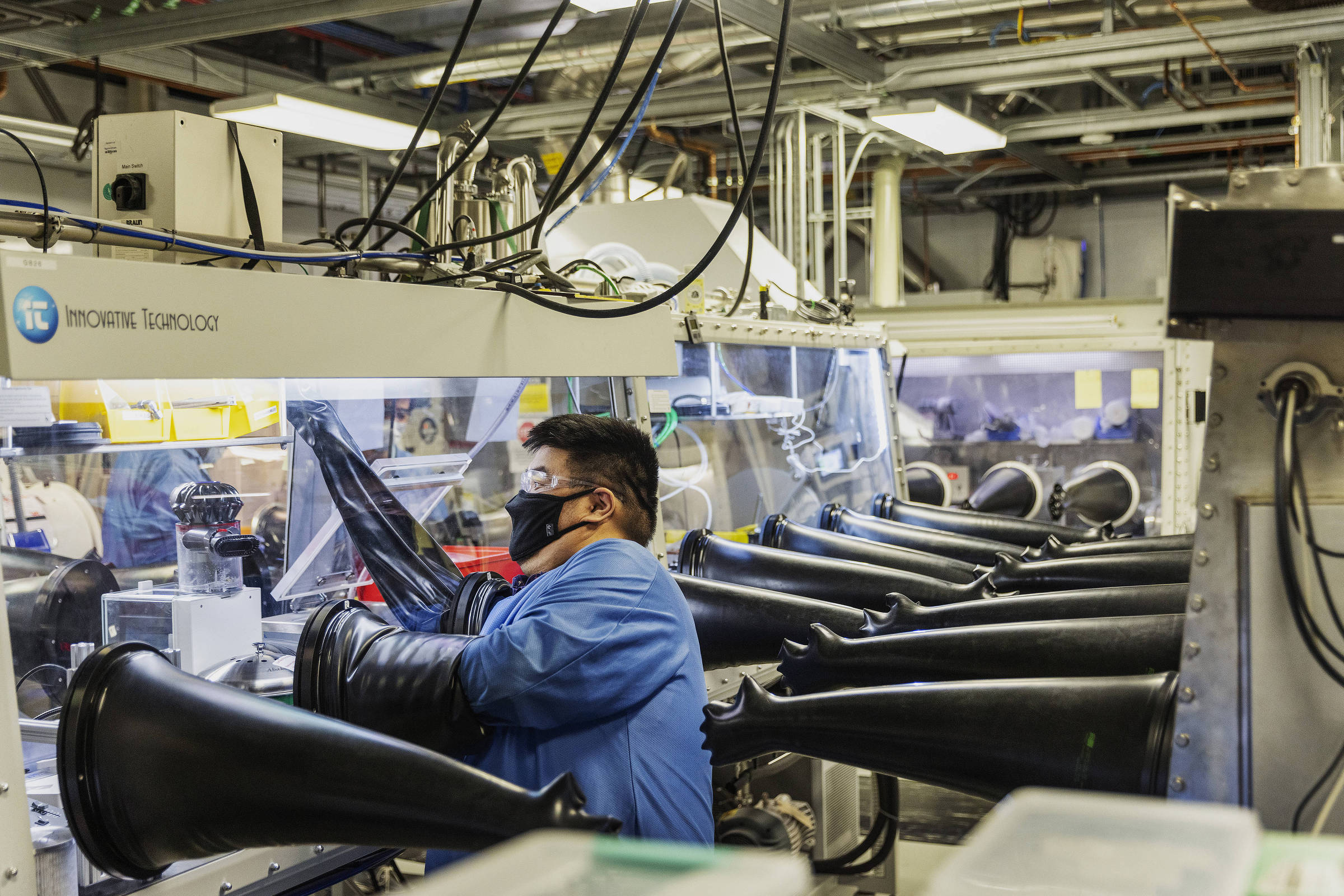
Technician works in the laboratory of QuantumScape, a company that develops lithium batteries for electric cars, in San José, California Lalo de Almeida/Folhapress
Dealing with the climate crisis requires changes in the development system and in the American way of life, with no time for palliative or individual solutions. The search for profit and the lack of collective sense, however, are still obstacles to urgent transformations.
In Silicon Valley, home to technology giants and innovation startups, we visited two companies that are looking for solutions for a more sustainable economy. Founded in 2013, Turntide produces intelligent engine systems to optimize energy expenditure in large buildings and in the agriculture and transport sectors. QuantumScape has been working, since 2010, on the development of cheaper and more durable batteries for electric cars.
In common, they share the discourse that sustainability is also a business opportunity and that, for systemic change, it is necessary to convince Americans that adopting measures against the climate crisis will generate profits and benefit them personally.
"Even if the climate wasn't changing, if you didn't have to worry about emitting pollutants, [adopting smart engine systems] would be an investment to make because it pays quickly and you stay ahead of the game," says Eric Meyerson, Vice President of Marketing Communications at Turntide. "It's not something you do because you have to, but because you want to. If you don't, your competitor will do it and get ahead of you."
QuantumScape, meanwhile, has spent the last 10 years researching how to produce a battery for electric cars that lasts longer and is cheaper than those that exist today. With millions of dollars from investors ranging from Bill Gates to Volkswagen, the company has 500 employees and plans to start marketing the batteries in 2025.
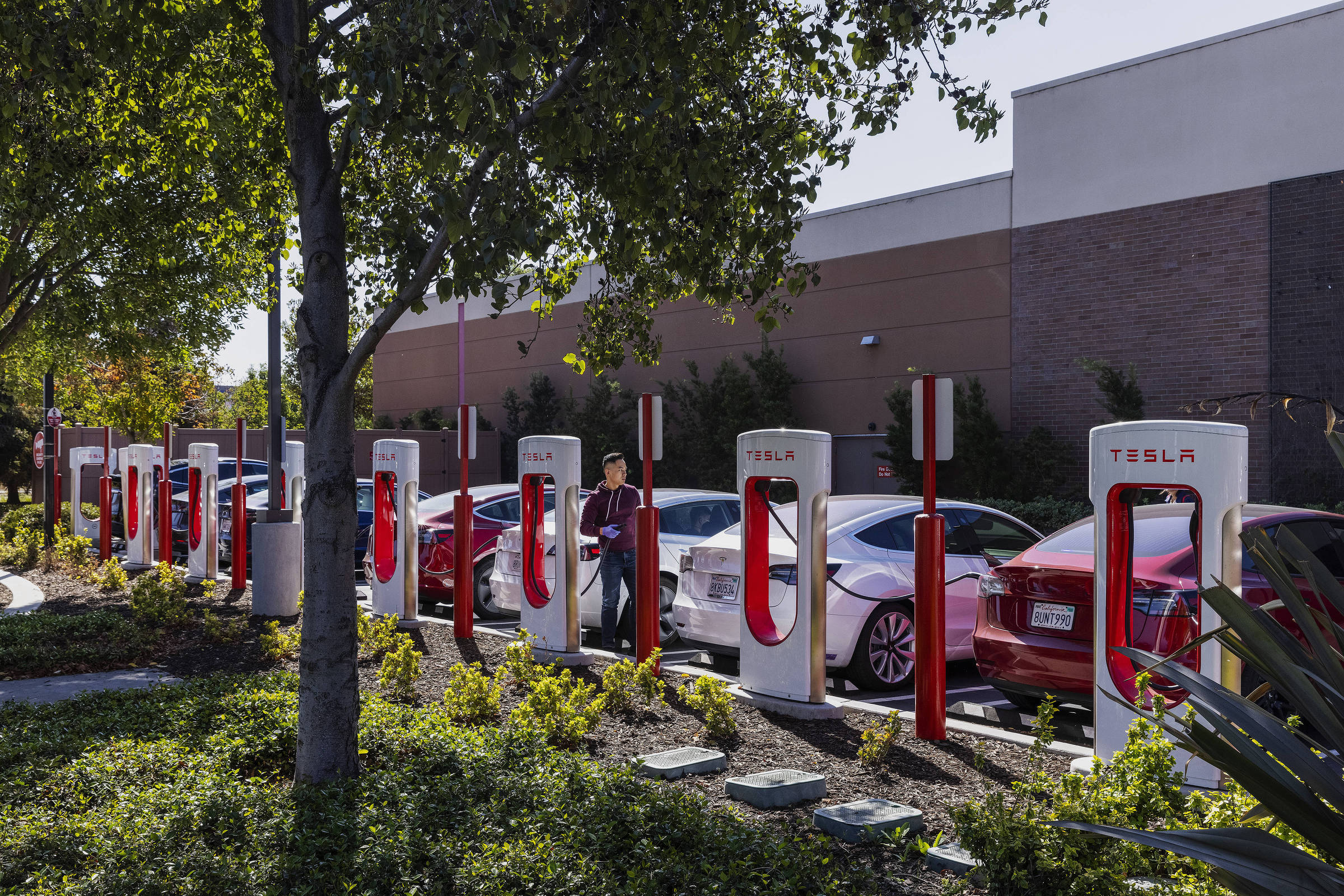
Tesla charging station for electric cars in San José, California Lalo de Almeida/Folhapress
"Electrifying the fleet is probably the biggest change in the transportation and automotive industry in the last hundred years," says Asim Hussain, Chief Marketing Officer for QuantumScape. "Over 25% of the world's pollutant emissions come from the transport sector. If we don't change this sector and the use of oil, there aren't many ways to significantly impact climate change."
Electric cars represent only 3% of the American market. Although sales and acceptance of these vehicles have increased in recent months, they are still considered expensive and come under criticism for their low battery life and the time it takes to charge them-usually an hour.
The average price of new and non-electric vehicles in the US is between US$ 20,000 and US$ 30,000, while the cheapest model from Tesla - the country's most famous electric carmaker, led by the media darling Elon Musk - doesn't roll out for less than $40,000. Asim explains that the QuantumScape battery uses solid-state lithium, which improves its efficiency by 85% and requires only 15 minutes to charge, in cars that might cost up to US$30,000.
He says he believes that the cost-benefit presented to the consumer will be enough to make more people want to buy electric cars.
Managing the climate crisis requires reorienting the global economy, rethinking the production chain, housing and energy supply systems in countries that have long ignored global warming and its effects.
The most recent venue for this debate was the 26th United Nations global climate conference, held in Glasgow, Scotland, in early November. One of the goals was for countries to present more ambitious commitments to face the climate crisis, but the results were underwhelming.
After two weeks of meetings, nearly 200 negotiators hammered out the conclusion of the Paris Agreement rulebook, which regulates the 2015 treaty, with transparency mechanisms and deadlines for revisions to climate goals. The lack of new funding commitments by the richest nations, however, blocked the rest of the world's willingness to go further with targets to reduce emissions of pollutants.
By leaving bolder goals, once again, for the future, the agreements signed in Glasgow will not prevent the global temperature from increasing by at least 2.4°C compared to the pre-industrial era - to level out well above the 1.5 °C threshold to avoid even more catastrophic scenarios.
"What we are collectively doing is not enough," says Yoca Arditi-Rocha, executive director of the CLEO Institute, which works to protect against the climate crisis.
"The crisis we're living through must be seen in emergency mode, something we've never experienced before, and we need to address it with the approach and focus we had in the face of the pandemic."
Crossing the US, it's easy to see that the abstract way we discuss the climate crisis —"an existential threat to the planet and humanity"— has failed to capture the urgency of the moment. "It's not about polar bears or things that are far from our reality," says Yoca. "How you connect these dots to people's everyday lives is what will make a difference."
The climate chaos has already hit us hard. It is evident in cities that have been turned to rubble by the force of water or fire, in crops destroyed by drought or wind, and in the faces of people whose lives have been drastically changed —most of them with no recourse for a second chance.
Translated by Kiratiana Freelon
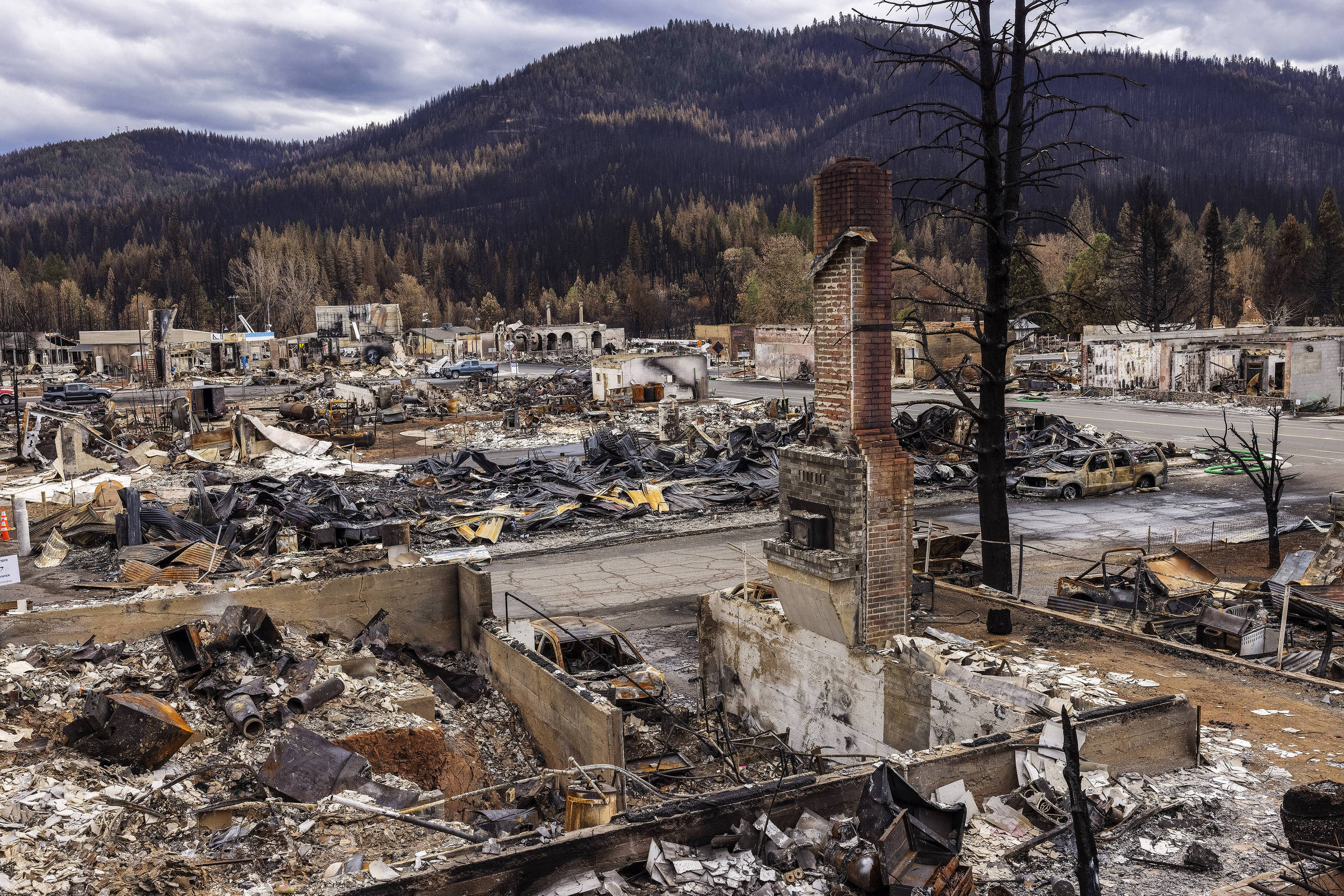
Chimney amid the remains of a house destroyed by the flames of the Dixie fire in Greenville Lalo de Almeida/Folhapress
